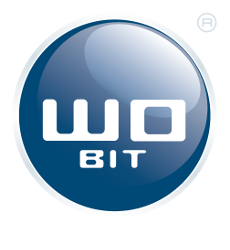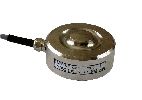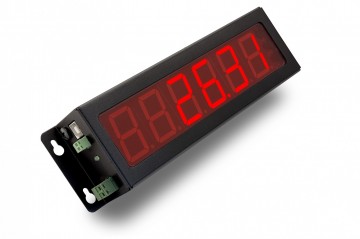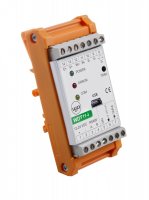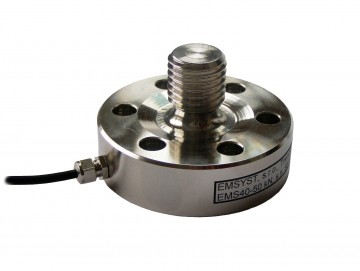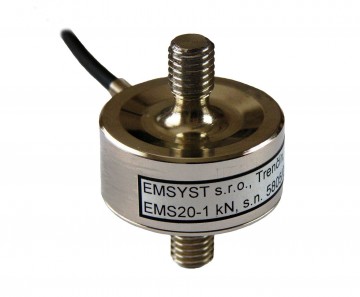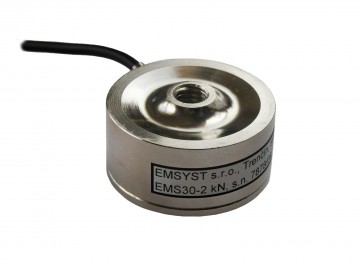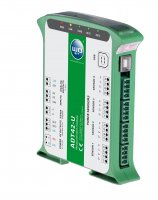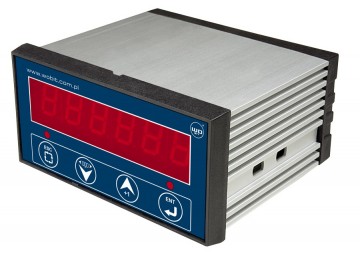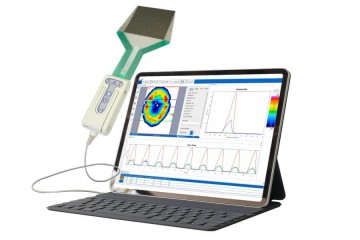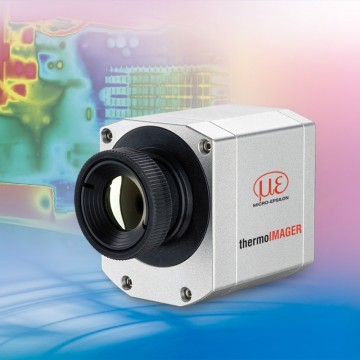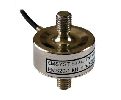
In many automation systems, there is a need to carry out weight measurements, eg in storage tanks for raw materials, dosing systems or inrun platforms. The devices that measure the tensile, tensile and stress forces are strain gauges. WObit offers a wide range of force sensors from Emsyst and Megatron together with measuring devices of own production.
Tensometers are characterized by high sensitivity and accuracy of measurements, while maintaining small size. They are resistant to vibrations and shocks, they can work at high temperatures and pressures, and they can also be placed on curved surfaces. The principle of the resistance strain gauge is based on the physical property of the resistance material, consisting in the change of its electrical resistance together with a change in its length. Resistance wire or foil, glued with a special adhesive on the element deforming under the influence of forces or moments. The sensor's retaining material undergoes the same deformation as the element on which the sensor was mounted. Tensometers in measuring technology usually work in the so-called Wheatstone bridge. This bridge consists of four branches made up of four elements: usually a strain gauge with R1 resistivity, compensation strain gauge with R2 resistance and two resistors R3 and R4. The compensation gauge compensates for the effects of side effects, especially temperature and moisture. Depending on the design of the supporting element (housing), the strain gauge can be used to measure small forces in the range of single newtons, as well as huge kiloni-tons in tens.
WObit offers strain gauges with a very wide measuring range starting from the level 0-3 N (KM202) and up to 2000 kN (EMS130). Depending on the series, sensors outside the measuring range differ in the shape of the body, round, beam and also S-shaped sensors are available, which are intended for measurement of compressive forces. Cylindrical sensors as well as rounded with threaded threads are designed for measurement of load and extension loads.
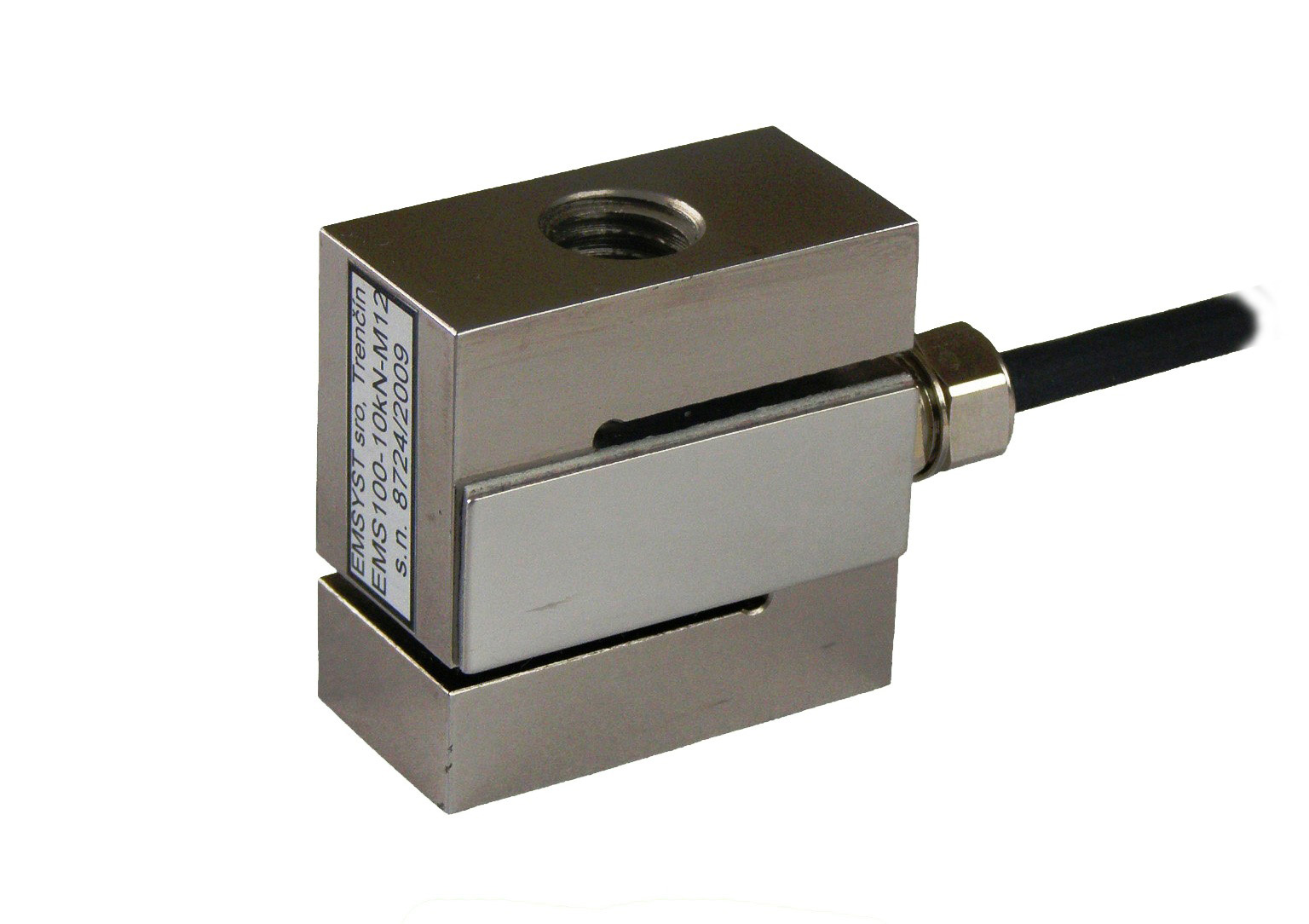 | 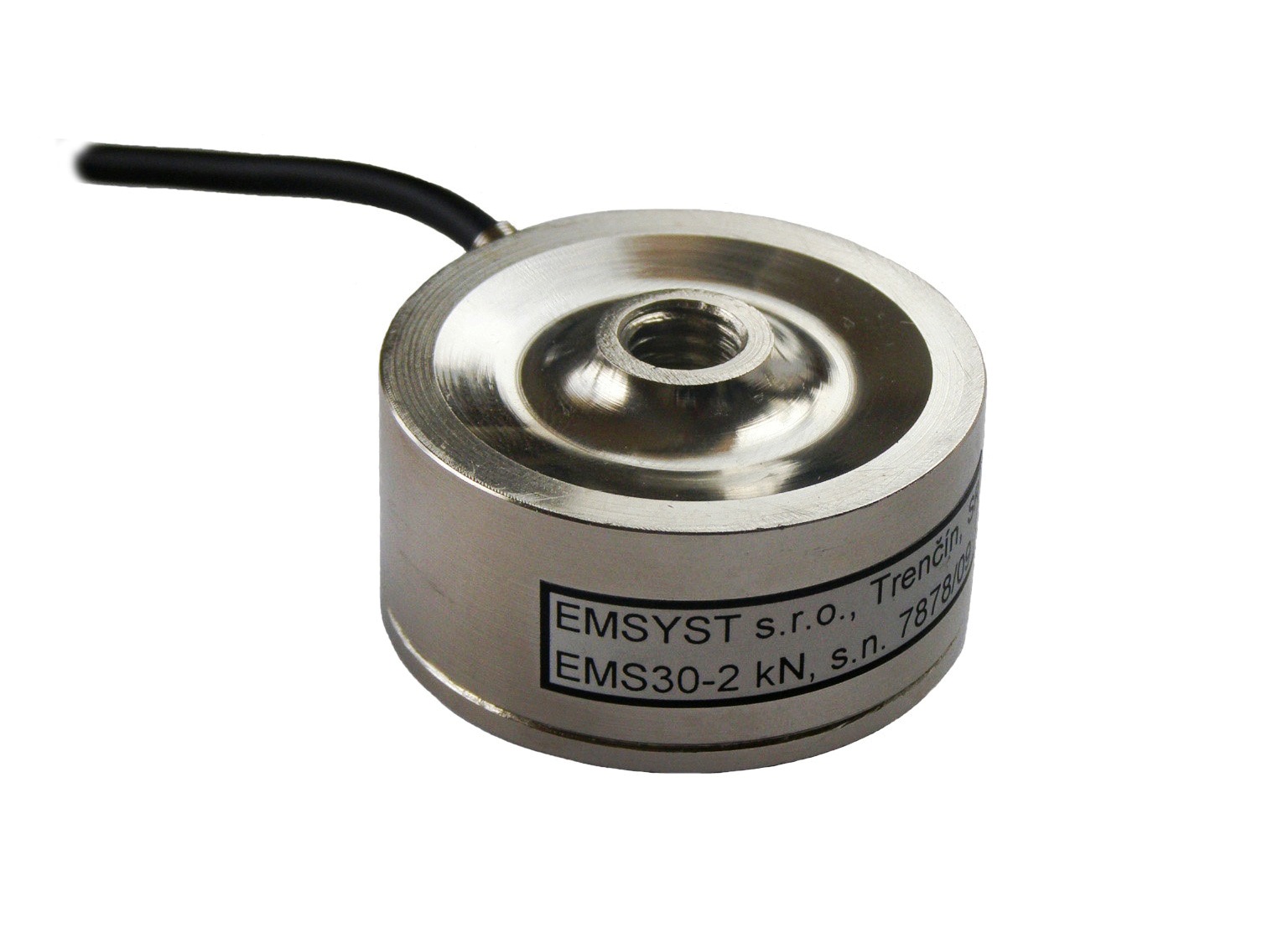 | 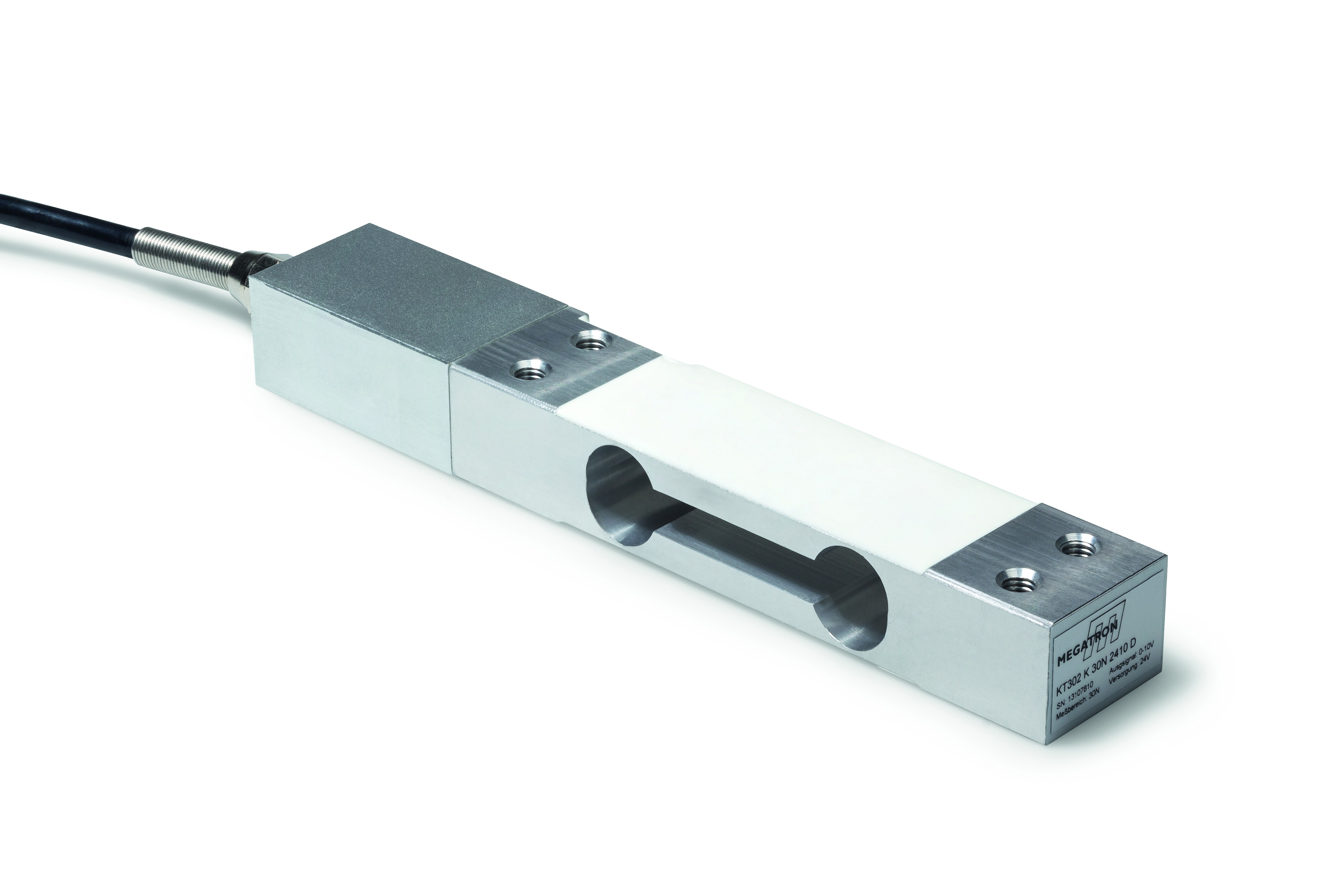 |
There are also special versions of sensors for a given application, eg SN-MP2 designed to measure the tension of a narrow band of rubber or other soft material. This sensor has three tensioning rollers, the middle roll is connected to a strain gauge bridge. The band voltage acts on the middle roll and the sensor measures this force. A full strain gauge bridge Wheatstone & # 39; is integrated in each load cell to provide accurate measurement. Some models of sensors such as KTB82, KTB52, KT1402 or KT1101 have built-in electronics that give the output a voltage signal in the 0 & # 8230; 10 V or 4 & # 8230; 20 mA standard. Depending on the model, the offered force sensors have a degree of protection from IP40 to IP66 and can operate at temperatures between -20 and 60 ° C.
.jpg) | For offered sensors, the companyWObitproposes a variety of self-measuring measuring devices that allow you to collect signals from multiple sensors, aggregate data, scale units, and display results locally. The simplest, very functional device iswzmacniacz WDT1designed to work with bridge-like strain gauges without built-in electronics. It allows the signal from the sensor to be converted to a voltage signal in the industry standard 0 & # 8230; 10 V. |
The device has the possibility to select a permanent bridge sensitivity (value 1mV / V, 1.5mV / V, 2mV / V). This allows cooperation with most strain gauges on the market. WDT1 also has a built-in RS485 interface with a data communication protocol in the Modbus-RTU standard, which allows you to connect up to 32 devices on one bus AND
| In case it is necessary to collect signals from several force sensors, the best solution is to usemodułu ADT42. It is a universal, four-channel transducer for strain gauges, which allows measurements with a resolution of 0.001% FS.ADT42it is equipped with two transistor outputs with configurable trigger thresholds and two opto-isolated inputs, including one tarring. Built-in operating modes allow the module to be used, for example, in dispensing applications, without additional control controllers. The measured values can be converted to an analog signal in the 0-10 V or 4-20 mA standard. Access to the device can also take place via the RS485 bus in the Modbus-RTU protocol. Thanks to the ability to sum measurements from selected channels,ADT42 can be used in multi-sensor weighing systems. | 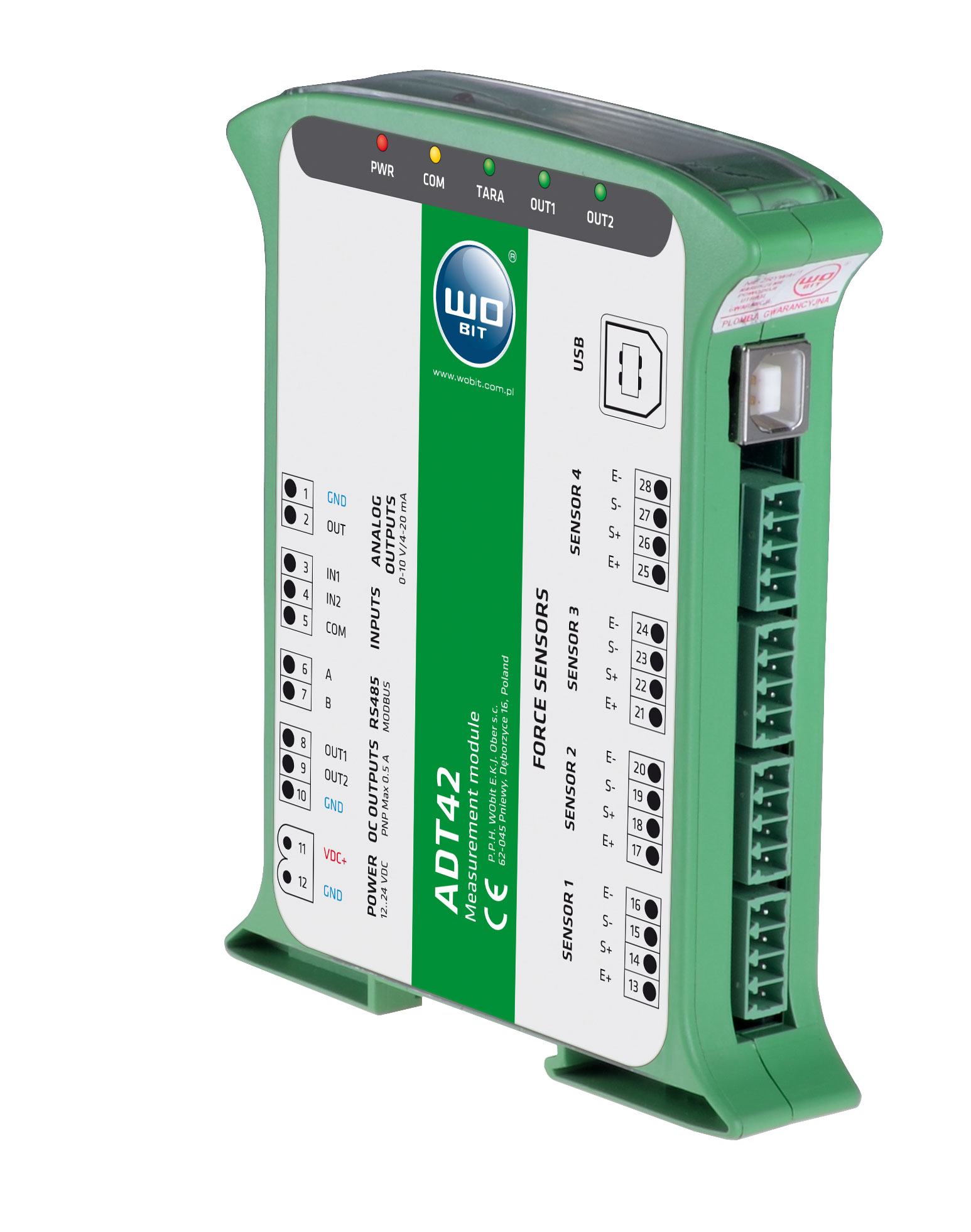 |
Innym urządzeniem, przeznaczonym do współpracy aż z ośmioma czujnikami tensometrycznymi, jest moduł ADT8 - dostępny dla zamówień projektowych (min. 10 szt). Moduł ADT8 może mieć zastosowanie wszędzie tam, gdzie istnieje konieczność zgrubnego lub precyzyjnego pomiaru siły (masy) z wykorzystaniem wielu czujników tensometrycznych. Przykładami takich pomiarów mogą być wieloczujnikowe platformy najazdowe ważące pojazdy, zbiorniki do ważenia cieczy, materiałów sypkich (silosy) itp. Podobnie jak ADT42, moduł ten jest wyposażony w interfejs RS485 oraz USB, a także w funkcję sumowania pomiarów, przydatną zwłaszcza w urządzeniach wagowych.
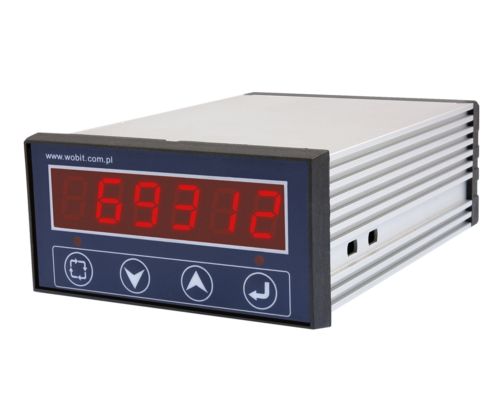 | Gdy istnieje potrzeba miejscowego wyświetlania wyników, optymalnym rozwiązaniem jest wskaźnik do czujników siły MD150T. This device allows direct display of the measured force on a six-position display and na dokonywanie pomiarów z rozdzielczością dochodzącą do 0,001% zakresu pomiarowego. Wynik może zostać przeskalowany na dowolną jednostkę siły lub masy. MD150T posiada także możliwość rejestrowania wartości maksymalnej oraz jest dodatkowo wyposażone w 2 wyjścia przekaźnikowe, wyjście 0-10V, oraz wejście tarujące. |
Wbudowane tryby pracy pozwalają zastosować MD150T np. w aplikacjach dozujących z pominięciem dodatkowych kontrolerów sterujących (podbonie jak ADT42). Urządzenie to ma złącze USB współpracujące z aplikacją MD150T-PC, służącą do akwizycji pomiarów do pliku lub na wykresie, a także w interfejs RS485 Modbus-RTU do komunikacji z urządzeniami przemysłowymi takimi jak sterowniki PLC czy panele HMI. Wyświetlacz jest zamknięty w solidnej, aluminiowej obudowie oraz dostępny w dwóch wersjach zasilania 12-36 VDC oraz 85-260 VAC (MD150T-230).
Poza standardowymi wykonaniami, w przypadku specyficznych aplikacji istnieje możliwość modyfikacji zaprezentowanych wyżej urządzeń oraz ich oprogramowania. Szczegółowe informacje można uzyskać pod nr 61 22 27 422 oraz na stronie www.wobit.com.pl.
